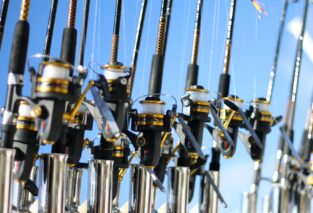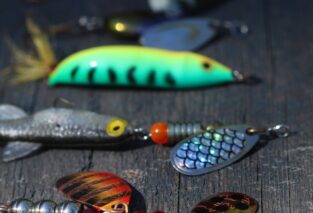If you’re an avid angler looking to reel in some catfish, then “Can You Go Catfish Fishing: Tips And Techniques For Catfish Anglers” is the perfect guide for you. Packed with expert advice, this comprehensive resource provides invaluable tips and techniques to enhance your catfish fishing experience. From choosing the right gear to mastering various fishing techniques, this book is a must-have for any catfish angler. Whether you’re a novice or an experienced fisherman, “Can You Go Catfish Fishing” will help you become a more successful catfish angler in no time.

Choosing the Right Equipment
Selecting the Right Fishing Rod
When it comes to catfish fishing, one of the most important decisions you’ll make is choosing the right fishing rod. The right rod will not only help you cast your line accurately, but also provide the necessary strength and flexibility to handle the powerful strikes of catfish. Look for a rod that is strong and durable, with a medium-heavy to heavy power rating. This will ensure that you can handle large catfish without worrying about the rod breaking or bending too much. Additionally, consider the length of the rod. Longer rods, around 7 to 8 feet, are ideal for catfish fishing as they allow for longer casts and better control over the fish.
Choosing the Appropriate Fishing Reel
Alongside a suitable fishing rod, choosing the appropriate fishing reel is equally important. For catfish fishing, a spinning reel or a baitcasting reel are the most common options. Spinning reels are easy to use and suitable for beginners, providing good control and versatility. On the other hand, baitcasting reels offer greater accuracy and control, making them a preference for more experienced anglers. Whichever reel you choose, look for one with a smooth drag system that can handle the weight and strength of catfish.
Picking the Right Fishing Line
Selecting the right fishing line is crucial to ensure success when targeting catfish. Since catfish are powerful and can put up a strong fight, it’s important to use a line that has a high pound test rating. A line with a test rating between 20 to 50 pounds is commonly recommended for catfish fishing. Additionally, consider using a braided line for its durability and high strength. Braided lines have a thinner diameter compared to monofilament lines of the same pound test, allowing for increased line capacity on your reel. However, if you’re fishing in an area with heavy cover or rocks, it may be wise to use a monofilament line to reduce the risk of line breakage.
Selecting the Right Hooks
Choosing the right hooks for catfish fishing can greatly affect your success rate. When selecting hooks, opt for those specifically designed for catfish with a strong and sturdy construction. Circle hooks are widely popular for catfish fishing as they tend to hook the fish in the corner of the mouth, reducing the chances of deep hooking. Circle hooks also increase the chances of a successful catch and release, as they are less likely to harm the fish. Depending on the size of the catfish you’re targeting, choose hooks ranging from 3/0 to 7/0.
Choosing the Right Bait
Selecting the right bait is crucial when it comes to enticing catfish to bite. Catfish have a diverse diet and can be caught using a variety of baits. Commonly used baits for catfish fishing include live bait such as minnows, worms, and shrimp. However, catfish are notorious for their strong sense of smell, making stink baits and prepared baits popular options as well. These baits are often made using a mixture of ingredients such as blood, cheese, and other strong-smelling substances. Experimenting with different baits can help determine what works best in your fishing location and target catfish species.
Locating Catfish
Understanding Catfish Habitats
To successfully locate catfish, it’s essential to have a good understanding of their habitat preferences. Catfish can be found in a variety of freshwater environments including rivers, lakes, and ponds. They are known for their ability to adapt to different habitats, but certain key features are favored by catfish. Catfish tend to gravitate towards areas with cover such as fallen trees, submerged vegetation, and rock structures. Additionally, they are often found near deep holes, drop-offs, and channels where they can seek shelter and find prey.
Identifying Potential Catfish Spots
Once you have a general understanding of catfish habitats, it’s important to identify potential hotspots within your fishing area. Look for areas that provide cover and food sources for catfish. Start by targeting areas such as river bends, submerged brush piles, and rocky ledges where catfish are likely to hide and ambush their prey. Pay attention to areas with slower currents, as catfish tend to prefer calmer waters. Additionally, areas with a combination of deep holes, shelves, and sandbars can hold plentiful catfish.
Using Electronics for Catfish Location
In recent years, anglers have started using electronics to enhance their fishing experience, and catfish fishing is no exception. Fishfinders and sonar units can be instrumental in locating catfish. These devices use sonar technology to scan the underwater environment, providing information about the depth, structure, and presence of fish. Look for fishfinders specifically designed for catfish fishing, as they often feature specialized settings and functions to target these species. By using electronics, you can save time by focusing your efforts on areas where catfish are most likely to be present.
Choosing the Right Time of Day
Choosing the right time of day to go catfish fishing can significantly impact your catch rate. While catfish can be caught at any time, they are generally more active during certain periods. Catfish are known for their preference for low-light conditions, particularly during early morning and late evening hours. These times of day offer cooler temperatures and reduced light, making catfish more comfortable and active in their search for food. However, it’s important to note that catfish can also be caught during the day, especially if you’re targeting specific structures or using effective bait presentations.
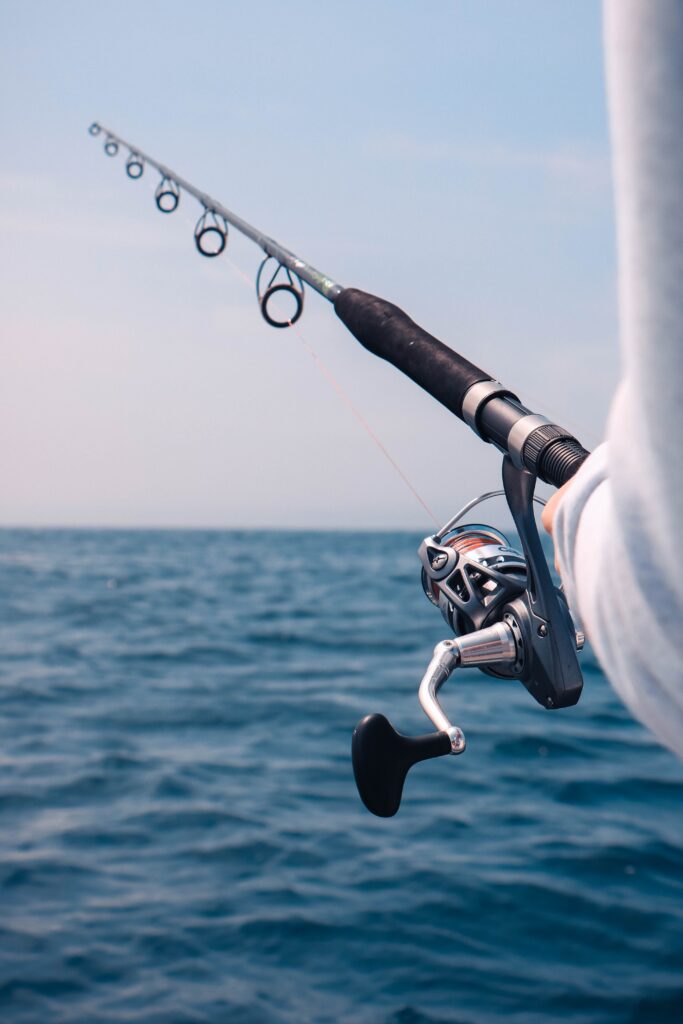
Casting and Presentation Techniques
Mastering the Art of Casting
Mastering the art of casting is essential for any angler, and it holds true for catfish fishing as well. A good cast allows you to place your bait accurately, ensuring it reaches the desired location where catfish are likely to be present. Practice your casting technique to improve your accuracy and distance. Pay attention to your rod position, release timing, and the amount of force you exert. By mastering your casting technique, you’ll be able to cover more water and increase your chances of a successful catch.
Using Different Casting Techniques
In addition to mastering basic casting, it’s beneficial to be familiar with different casting techniques that can be effective when targeting catfish. One popular technique is the pendulum cast, which involves swinging the rod back and forth to build momentum before releasing the line. This technique allows for longer casts, which can be advantageous when targeting catfish in deep waters or areas with significant cover. Another technique is the pitch cast, which involves making short, accurate casts by flicking the bait with minimal effort. This technique is useful when targeting specific structures or areas with restricted casting space.
Presenting Bait Effectively
Once you’ve cast your line, presenting the bait effectively is key to enticing catfish to bite. Consider the fishing situation and adjust your presentation accordingly. If you’re targeting catfish near the bottom, allow your bait to sink and rest on the bottom where catfish are likely to forage. Use a sliding sinker or a Carolina rig to keep your bait suspended just above the bottom. If you’re fishing in areas with heavy cover, consider using a slip bobber rig that allows you to suspend your bait at a desired depth while keeping it away from snags. Experiment with different bait presentations to find what works best for the specific conditions you’re fishing in.
Various Fishing Techniques
Basic Bottom Fishing Technique
One of the most straightforward and effective techniques for catching catfish is bottom fishing. This technique involves casting your bait to the bottom and allowing it to rest there, enticing catfish to feed. Find areas with structure such as rocks, logs, or submerged vegetation, as these are likely to hold catfish. Use a sinker heavy enough to keep your bait on the bottom, but light enough to allow for sensitivity to bites. Keep your line taut and pay attention for any signs of a catfish bite. Once you feel a bite, give the fish a moment to fully take the bait before setting the hook.
Drift Fishing Technique
Drift fishing is a popular technique used to cover large areas of water and locate active catfish. It involves allowing your bait to drift naturally with the current. Begin by selecting a drifting path that covers areas likely to hold catfish, such as drop-offs, channels, or underwater structures. Use a drift rig, which typically consists of a sliding sinker above a swivel, followed by a leader and your bait. Cast your line downstream and let the current carry your bait. Monitor your line closely for any bites or signs of activity. By drifting your bait, you can effectively search for actively feeding catfish.
Trotline Technique
The trotline technique is a passive fishing method used to catch multiple catfish at once. It involves deploying a long line with multiple baited hooks across a body of water. The line is anchored at both ends and remains stationary, allowing you to target a specific area and monitor multiple lines simultaneously. When setting up a trotline, consider using strong, abrasion-resistant fishing line and sturdy hooks. Bait each hook with a suitable catfish bait, spacing them at regular intervals along the line. Allow the trotline to soak for a sufficient period, periodically checking for any activity. Once you detect a fish on the line, carefully reel it in and remove the catch.
Jug Fishing Technique
The jug fishing technique provides an exciting and active way to target catfish. It involves using floating jugs or bottles as bobbers, with baited hooks attached to the line. Set up multiple jugs strategically across the water, ensuring they are clearly visible and easily retrievable. Bait each hook with a catfish-friendly bait and cast the jugs into the water. The jugs will float on the surface, indicating any activity when a fish takes the bait. When you spot a jug moving or disappearing beneath the water, carefully retrieve it and reel in your catch. Jug fishing allows for a hands-on approach and is especially popular in areas with calm water or slow currents.
Noodle Rod Technique
The noodle rod technique is a unique and effective way to catch catfish, particularly in shallow waters. Noodle rods, also known as pool noodles, are lightweight foam rods that can be used to detect bites and fight catfish. To set up a noodle rod, slide the line through the noodle, attaching a hook and bait to the end. Cast the noodle rod into shallow areas, paying attention to visible catfish activity or structure. The lightness and flexibility of the noodle rod allow it to bend and move when a fish takes the bait, alerting you to a bite. Use a quick motion to set the hook and begin reeling in your catch.
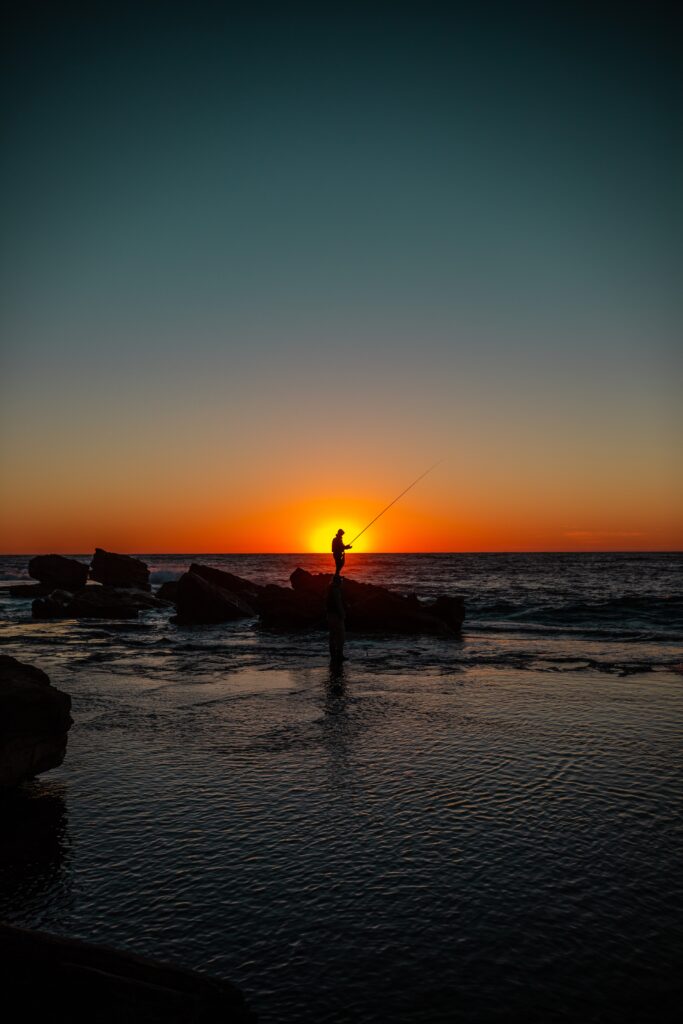
Using the Right Catfishing Baits
Live Bait Options
When it comes to live bait options for catfish, there are several choices that can be highly effective. One popular live bait option is minnows, which can be purchased from bait shops or caught using a cast net. Hook the minnow through the lips or behind the dorsal fin to keep it lively and natural. Another effective live bait option is worms, which can be readily found in the soil or purchased from bait shops. Thread the worm onto the hook, allowing it to wiggle and attract nearby catfish. Shrimp is also a popular live bait choice, particularly for targeting larger catfish species. Use a sturdy hook to secure the shrimp and present it near the bottom where catfish are likely to feed.
Cut Bait Options
Cut bait refers to pieces of fish that are used as bait, and it is highly effective for enticing catfish to bite. Common cut bait options include mullet, shad, herring, or other oily fish. Start by obtaining fresh or frozen fish and cut them into small pieces, making sure to remove any bones or scales. Use a sharp knife to make clean cuts, creating chunks or strips of bait that can be easily impaled on the hook. Large chunks of cut bait are effective for targeting larger catfish, while smaller pieces work well for smaller catfish species. The strong scent and oils released by the cut bait will attract catfish from a distance.
Prepared Baits and Dough Baits
Prepared baits and dough baits are manufactured baits that come in various flavors and fragrances. These baits are specifically designed to attract and entice catfish, leveraging their strong sense of smell. Prepared baits are often sold in jars or tubs and come in different forms, such as dip baits or punch baits. Dip baits are sticky and can be smeared onto hooks, while punch baits are typically used with a specialized sponge or treble hook. Dough baits are soft, malleable mixtures that can be formed into balls or threaded onto hooks. Prepared baits and dough baits are convenient options for catfish anglers, as they eliminate the need for live or cut bait preparation.
Understanding Catfish Behavior and Feeding Patterns
Learning About Catfish Habits
Understanding catfish behavior and habits can provide valuable insights into their feeding patterns and help improve your chances of a successful catch. Catfish are opportunistic feeders and will search for food in a variety of ways. They are known for their scavenging behavior, often feeding on dead or decaying matter. Catfish are also active predators and will readily consume live fish, insects, crustaceans, and other small aquatic creatures. Additionally, catfish are sensitive to changes in water temperature and oxygen levels, often becoming more active during periods of stable conditions.
Understanding Catfish Feeding Patterns
Catfish feeding patterns can vary depending on factors such as water temperature, time of day, and availability of food sources. Catfish tend to be more active during low-light conditions, such as early morning or late afternoon, when they feel more comfortable and have a greater advantage over their prey. They also tend to be more active during periods of stable weather. When it comes to feeding preferences, catfish are known to be opportunistic and will consume a wide range of prey items. They often target areas with good cover and structure, where they can hide and ambush their prey.
Identifying Preferred Food Sources
Identifying catfish’s preferred food sources can help increase your success rate when targeting these species. Catfish are drawn to areas with abundant food sources, such as schools of baitfish, crayfish, insects, and other aquatic organisms. When searching for catfish, pay attention to areas with visible signs of activity, such as birds diving or surface disturbances caused by feeding fish. Additionally, observe the local ecosystem and identify key forage species for catfish in your fishing area. By matching your bait to the prevalent food sources, you can increase the chances of attracting catfish and triggering a bite.
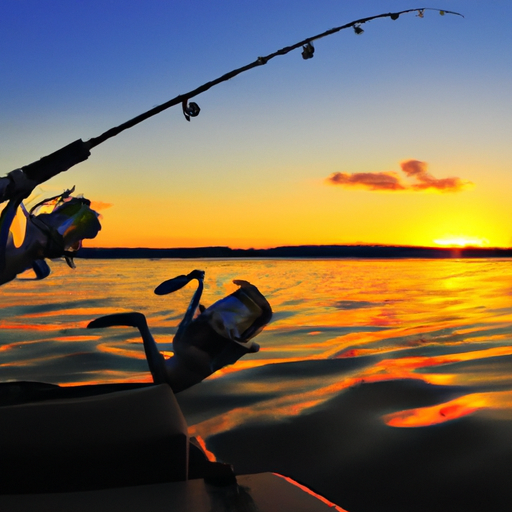
Catfish Fishing Strategies
Targeting Specific Catfish Species
Depending on your location, there may be different species of catfish available to target. Each species has its own characteristics and preferred habitats, requiring specific fishing strategies. Research the different catfish species in your area and learn about their habits, preferred baits, and habitats. For example, flathead catfish prefer live bait and tend to be more active during nighttime. Channel catfish are often found near structure and can be enticed with various baits. Blue catfish favor deep waters and are known to respond well to cut bait. By targeting specific catfish species, you can fine-tune your techniques and increase your chances of success.
Using Decoys and Attractants
Using decoys and attractants can be a useful strategy to entice catfish to your fishing spot. Decoys imitate prey species, attracting catfish to investigate and potentially strike. Consider using artificial lures or soft plastics that mimic the movement and appearance of natural baitfish or other prey items. Attach these decoys to your line and present them in a manner that imitates an injured or struggling prey. Additionally, attractants such as scents can enhance the appeal of your bait or lure. Apply catfish-specific attractants to your bait or lures to release powerful odors that can effectively draw catfish to your presentation.
Using Chumming Techniques
Chumming involves dispersing small amounts of bait or attractants in the water to create a feeding frenzy and attract catfish to your location. Chumming can be accomplished by using a chum bag or a container with small holes that slowly releases scent and particles into the water. Cast the chum bag near your fishing spot, allowing it to gradually release the chum and attract catfish. The scent and particles will create a scent trail, drawing catfish towards your presentation and increasing the likelihood of a successful catch. Experiment with different types of chum, such as cut bait or commercial catfish attractants, to determine what works best in your fishing area.
Night Fishing for Catfish
Nighttime can be an excellent time to target catfish, as they tend to be more active and willing to feed during these hours. To effectively fish for catfish at night, ensure you have the necessary tools and equipment such as a headlamp, glow sticks, and a reliable light source. Catfish are known to be attracted to light, so consider using submersible fishing lights to create a light source underwater. This will help attract baitfish and insects, subsequently attracting catfish. Additionally, catfish have excellent night vision and rely heavily on their sense of smell, so consider using strong-smelling baits or attractants to enhance your chances of a successful catch.
Tips for Catfish Anglers
Patience is Key
Patience is a virtue when it comes to catfish fishing. Catfish can be elusive and may not strike immediately, requiring anglers to wait for the right moment. Prepare yourself mentally for periods of waiting and be patient. Allow enough time for your bait or presentation to entice catfish. It’s important to remember that successful catfish fishing often requires persistence and patience.
Maintaining Proper Fishing Etiquette
When catfish fishing, it’s important to be mindful of other anglers and practice proper fishing etiquette. Avoid casting too close to other fishermen, as it can disrupt their fishing experience and potentially lead to entangled lines. Be respectful of the fishing environment and avoid leaving behind any trash or debris. Additionally, be considerate of noise levels, as excessive noise can scare catfish away. By maintaining proper fishing etiquette, you contribute to a positive fishing environment for everyone.
Keeping Safety a Priority
Safety should always be a priority when catfish fishing. Always wear a properly fitted personal flotation device (PFD) when fishing from a boat, especially if you’re fishing alone or in areas with strong currents. Be cautious when handling sharp hooks and be aware of the potential for hook injuries. Use pliers or dehooking tools to safely remove hooks from catfish. Additionally, be mindful of the weather conditions and be prepared for sudden changes. Carry a first aid kit and be knowledgeable about basic first aid procedures. By prioritizing safety, you can enjoy a worry-free catfish fishing experience.
Learning from Experience
Every catfish fishing trip provides an opportunity to learn and improve. Pay attention to the techniques, baits, and presentations that yield the most successful catches. Keep a fishing journal or take notes after each trip to track patterns and observations. By reflecting on your experiences and learning from them, you can continuously refine your skills and become a more successful catfish angler.
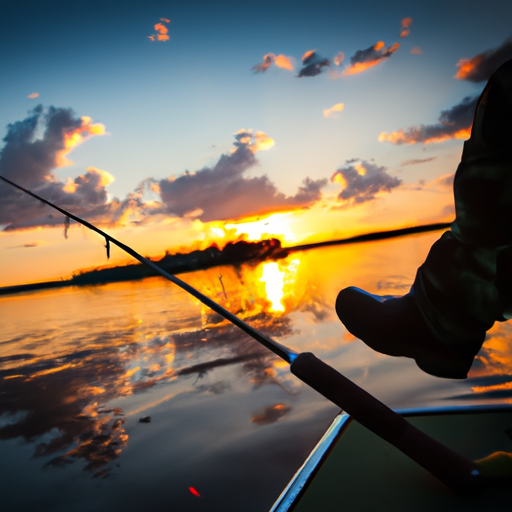
How to Handle and Release Catfish
Using Proper Catfish Handling Techniques
Proper handling of catfish is essential to ensure their survival after catch and release. When handling catfish, wet your hands or wear gloves to avoid removing the protective slime coating that covers their body. Grasp the catfish by the lower lip or mouth area, taking care to avoid the sharp spines on the dorsal and pectoral fins. Support the belly of the catfish with your other hand to prevent excessive stress on its internal organs. Avoid squeezing the fish tightly, as this can cause injury or harm.
Removing the Hook Safely
When removing the hook from a catfish, it’s important to do so carefully and efficiently. Use needle-nose pliers or a dehooking tool to firmly grip the hook and gently back it out of the catfish’s mouth. If the hook is deeply embedded, try to cut the line as close to the hook as possible to minimize damage to the fish. If the hook cannot be easily removed or if you’re unsure, it may be best to leave the hook in place and release the fish with the hook still attached. The catfish’s natural enzymes will often dissolve the hook over time, allowing the fish to recover.
Releasing the Catfish Properly
Properly releasing catfish after catch ensures their survival and allows them to continue contributing to the ecosystem. To release a catfish, gently place it back in the water, allowing it to swim away on its own. Hold the fish upright or horizontal, supporting its body until it swims out of your grasp. Avoid throwing or dropping the catfish into the water, as this can cause further stress or injury. If the catfish appears sluggish or disoriented after release, gently move it back and forth in the water to help oxygenate its gills. Take a moment to appreciate the beauty of the fish before it returns to its natural habitat.
Regulations and Legal Considerations
Understanding Fishing Regulations
Before heading out for catfish fishing, it’s important to familiarize yourself with the fishing regulations in your area. Each region may have specific rules and regulations regarding catch limits, size restrictions, and fishing seasons. Ensure that you have a clear understanding of the regulations set by the local fishing authorities to avoid any legal issues. Familiarize yourself with the specific catfish species you’re targeting, as regulations may vary depending on the species.
Obtaining Fishing License
In most areas, a fishing license is required to engage in catfish fishing. Check with the local fishing authorities to determine the specific requirements for obtaining a fishing license. Licenses may be available for purchase online, at local bait shops, or at designated licensing offices. Make sure to have a valid and up-to-date fishing license before embarking on your catfish fishing adventure. Fishing without a license can result in hefty fines or penalties.
Following Catch Limits and Size Restrictions
Catch limits and size restrictions are put in place to ensure the sustainability of catfish populations. Familiarize yourself with the specific regulations regarding the number of catfish you are allowed to catch per day or per trip. Additionally, pay attention to size restrictions, as some areas may have minimum or maximum sizes for catfish. By adhering to catch limits and size restrictions, you play a vital role in preserving catfish populations for future generations of anglers.
By following these tips and techniques, you’ll be well-equipped to embark on a successful catfish fishing adventure. Remember to choose the right equipment, familiarize yourself with catfish habitats, practice effective casting and presentation techniques, and explore various fishing strategies. Respect the catfish you catch by practicing ethical and responsible handling techniques, and adhere to fishing regulations to ensure the sustainability of these valuable species. Happy catfish fishing!


